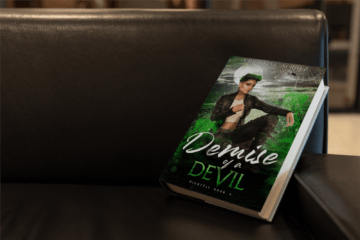Guest post by Michael Parkes, author of Gnomes and Knights, a collection of short fantasy stories for children.
As an author and enthusiast of gnome-based literature, even I was surprised by the sheer number of magical little guys there were in mythology. My book had gnomes and gremlins, which are pretty well-known, though it seems like every culture has their own respective variations that tend to be either gnome-like, dwarf-like, elf-like or some sort of spirit.
Gnomes as we know them now were first mentioned in “A Book on Nymphs, Sylphs, Pygmies, and Salamanders, and on the Other Spirits” by Paracelsus in 1566, a book published posthumously, as Paracelsus himself died in 1541. He was an incredibly prominent alchemist and physician, which may sound odd, but gnomes originally appeared as part of Renaissance magic and also as part of alchemy.
Gnome statues became popular household decorations by the late 1700s, with the area around Brienz, Switzerland gaining fame for their skill in producing house dwarves from wood. Gnome-like critters are fairly common in European mythology; Poland has Krasnoludek which are described as small humans wearing red pointy hats, though it is dwarves that are older and much more prevalent in Europe.
Dwarves are incredibly old as a concept, being prominent in both Germanic and Nordic mythology, so it’s possible that dwarves were the first magical little guys, at least in Europe. Either way, garden gnomes have been around for centuries; they first became popular around the mid-1800s. Rather humorously, the earliest predecessor of garden gnomes were statues of Priapus placed in Greek/Roman vegetable gardens; so, in a way, the Greek God Priapus, who represented vegetables, gardens, and beekeeping, amongst other things, was kind of like the first garden gnome.
Gremlins are a very new concept, only dating back to the 1920s. They were first invented by aviators to blame for unexplained mechanical difficulties. In World War 2, gremlins would continue to be blamed for troubles with aircraft and mental problems amongst soldiers as well, and it was also during World War 2 that gremlins became especially well-known. There are even old wartime posters warning of gremlin sabotage!
Some magical little guys are more malevolent than mischievous or helpful though. The Redcaps for example are deranged goblins from the England/Scottish region who soak their hats in the blood of those they murder. They can be driven off by reading the scripture at them or brandishing a crucifix, which causes them to leave behind a large tooth as they vanish into flames with a scream. There are also Bluecaps, associated with the same geographic area as Redcaps, though they are helpful mining spirits. They expect to be paid for their labors of course, but also lead miners to rich mineral deposits, and warn them of cave-ins.
Even Africa has magical little guys, though they tend to be either spirits or connected to shamanism. The Tokoloshe is from Zulu mythology and is essentially a dark creation of evil shamans sent to cause chaos, disease, and death. The defense against them is putting your bed up on bricks; this stems from their origins, which is that they were created to explain why people of the tribe would die suddenly in their sleep. This was not due to Tokoloshe, but rather because they would have fires going throughout the night in their small, enclosed stone huts and slept on the floor on grass mats. They were giving themselves carbon monoxide poisoning, though since the gas sinks to the ground, putting the bed on bricks elevated it enough to be outside the layer of poisonous gas.
Overall, there are a surprisingly large number of magical little people in mythology and it seems every culture have a couple of their own. It’s pretty interesting to read up on them, and it is definitely great story material, so authors or really anyone into folklore and mythology have a lot to work with if they go looking for it.
—You can find more about Michael and his books on his website, and don’t forget to follow him on TikTok, Twitter, and BookTube!


